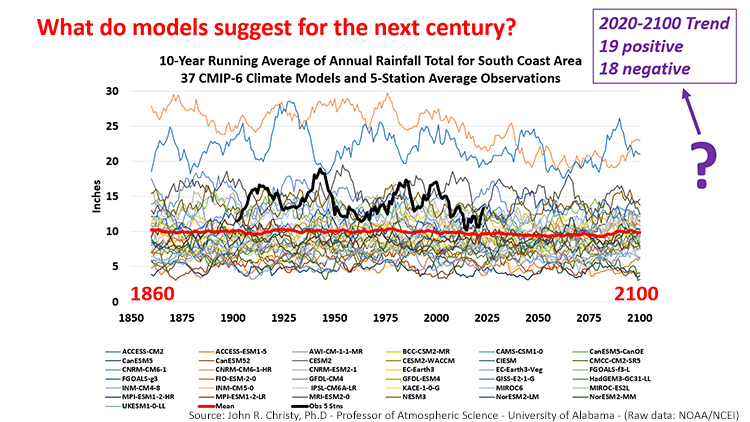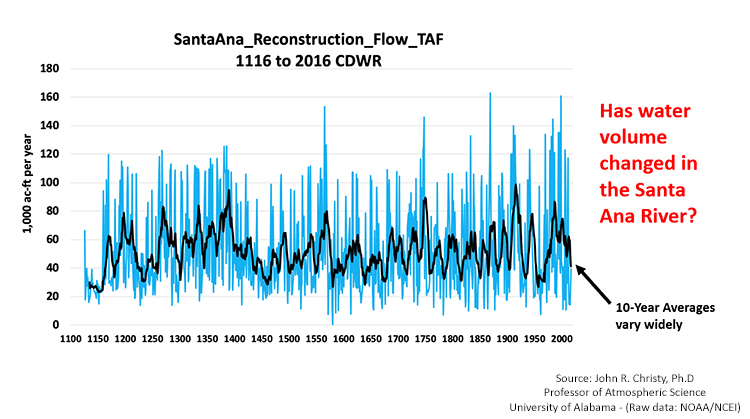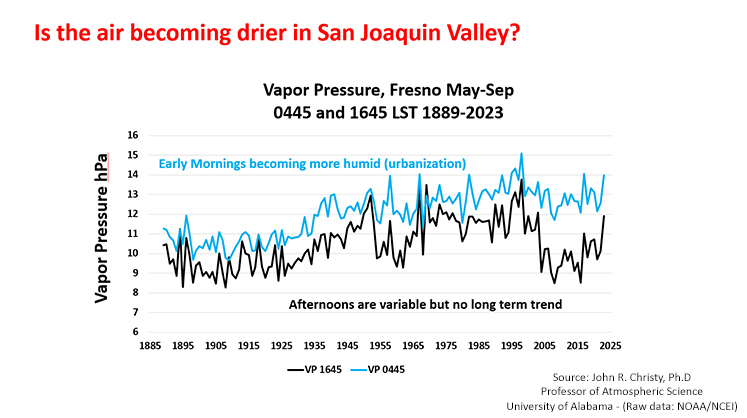Climate Data Refutes Crisis Narrative
On September 16, with great fanfare, California Attorney General Rob Bonta announced his office had filed a lawsuit against five major oil companies. Accusing them of knowingly misleading the public regarding the alleged harm that fossil fuels would inflict on the climate, Bonta’s office seeks billions in compensatory damages. But the climate change theory that Bonta’s case relies on must ultimately be validated by observational data. And the data does not support the theory.
Suing oil companies is becoming big business. Along with California, state and local government climate change lawsuits against the fossil fuel industry have been filed in Oregon, Colorado, Minnesota, Vermont, Massachusetts, Rhode Island, Connecticut, New York, New Jersey, Delaware, Maryland, South Carolina, and Hawaii. Alleging these companies have directly caused global warming and extreme weather, they seek damages for consumer fraud, public nuisance, negligence, racketeering, erosion, flooding and fires.
These cases will take years to resolve, and even in victory, will cost oil companies hundreds of millions (or more) in legal fees, costs that will be passed on to consumers. The plaintiffs were handed a huge advantage in 2007 in the Massachusetts v. Environmental Protection Agency case, when the U.S. Supreme Court, in a 5 to 4 ruling, gave the EPA authority to declare CO2 a dangerous pollutant. In 2009, the EPA did just that, paving the way for litigation.
It’s no certainty the oil industry will aggressively fight these lawsuits. If a broad settlement can be reached, that is probably their preference. Not only will a settlement avoid bad publicity, there is scant economic motive for oil companies to challenge the alleged consensus on climate change. As regulations, restrictions, and litigation disrupts oil and gas development, demand outpaces supply and prices go up much faster than production costs. A rational choice by oil and gas executives would be to collect market-driven record revenues and split the windfall profits with the government. That is a lot less messy.
That’s also a shame. By sidestepping the question of whether CO2 is indeed a dangerous pollutant, and instead leaving that decision up to a politicized EPA, the U.S. Supreme Court in the Massachusetts v. EPA case issued a deeply flawed ruling. Without CO2, life on earth as we know it would not exist. CO2 is plant food, and without it, plants die. There is evidence that more atmospheric CO2 would have a primarily beneficial impact on planetary ecosystem health. If oil and gas companies defended themselves on this basis, they might take a case all the way to the Supreme Court and force a reversal of Massachusetts v. EPA.
An aggressive defense against Bonta’s lawsuit by Exxon Mobil, Shell, Chevron, ConocoPhillips,, BP, and the American Petroleum Institute would attack the core premise of the plaintiffs, the alleged evidence of global warming and extreme weather. Because what is being presented as “evidence” supporting a climate “crisis” is consistently misleading and often outright fraudulent.
Earlier this month in Orange County, California, at an event attended by water industry executives, a debate between two climate experts offered a revealing look into the tactics and the mentality of the climate alarmists, as well as the beleaguered integrity of climatologists still willing to challenge the narrative.
In a session with the unsubtle name “Is it fair to blame climate change for everything?,” two very divergent points of view were on display. To represent the alarmist perspective, a professor from a world-famous university – who shall remain anonymous – presented a series of maps of the U.S., with a specific focus on the Southwest and on California. The maps depicted “before climate change” and “after climate change” scenarios, using the now familiar technique of benign blue and green overlays in areas with normal cool temperatures, and scary orange and red overlays in areas suffering alarming heat. Predictably enough, without delving into the details, the “after climate change” maps were a sea of red and orange.
The only thing about this presentation that was certain was the certainty of the presenter. We are in a climate crisis, human activity has caused this crisis, and “the evidence is overwhelming.” We only later learned that the maps being displayed weren’t based on actual temperature observations, but had been produced by a computer simulation.
After this first presenter finished, Dr. John R. Christy stepped up to offer a different conclusion. With a Ph.D in Atmospheric Science and currently serving as the Distinguished Professor of Atmospheric Science and Director of the Earth System Science Center at The University of Alabama, Christy is eminently qualified to share his views on our climate future. As a native of California, Christy assured the audience that he has been giving that state special attention his entire life. He then presented a series of slides that unequivocally contradict what we hear every day. California, to say nothing of the rest of the world, is not experiencing rapid warming, nor is it experiencing unusually violent weather.
Christy’s message might be summarized as follows: There may be some warming occurring over the past century in California, but it is not extreme, nor is it accompanied by unusually severe anything: droughts, extreme wildfires, heavy rainfall, diminished snowpacks, reduced river volumes, or drier air. Readers are encouraged to scroll through Christy’s charts, which are reposted (with permission) following this text.
The data that Dr. Christy used in his presentation did not come from hypothetical climate models, but were compiled from actual climate and weather observations gathered by weather stations and satellites and extracted from databases maintained by the National Oceanographic and Atmospheric Administration and other internationally recognized official sources.
If you haven’t heard of John R. Christy despite him being one of the preeminent climate scientists in the world, that’s no accident. Along with Dr. Richard Lindzen, Dr. Judith Curry, and hundreds of others, his work is marginalized and his press and online coverage is either nonexistent or negative. Back in 2019, back when President Trump’s regulatory reforms had the climate industrial complex fearing for its life, Dr. Curry published an expose of what she dubbed “consensus enforcement.” In it, she described how the world’s most prestigious climate journals were yielding to pressure – mostly supported by their own editorial management – to refuse to publish anything by climate “contrarians.”
As we know, suppression of unwanted facts and analysis regardless of credibility or intent is not restricted to climate contrarians. In March 2023, Michael Shellenberger – once honored in 2008 as a Time Magazine “Hero of the Environment,” testified before the U.S. Congress on what many have joined him in calling the “Censorship Industrial Complex,” a coalition of corporate special interests, government agencies, and major online platforms that smothers honest dialog on topics of urgent national importance.
Attempting to compile information on climate that doesn’t support a crisis narrative is demonstrably challenging, as anyone attempting to use a mainstream search engine will quickly attest. For every analysis or declaration that may exist, claiming there is not a climate crisis, search engines will offer a page full of reports debunking the analysis and discrediting the source. Often it is almost impossible to even find a link to the analysis or the declaration itself. The World Climate Declaration, a petition signed (so far) by more than 1,800 experts who assert there is no climate emergency, is an example of a suppressed and unfairly stigmatized document. But with or without great numbers, the presence of scientists like Christy, Lindzen, Curry, and many others with extraordinary credentials who make this claim should put to rest the notion that the science is settled. Science is not a democracy. It is a search for truth through trial and error.
One of the saddest examples of suppression is the reluctance of conservative editors to challenge the scientific arguments used to support the climate crisis narrative. An article I recently wrote for American Spectator, “California AG Sues Big Oil for Telling the Truth About Fossil Fuels,” was refused by two conservative publications that have frequently accepted my work. Both of them have significant reach and credibility among mainstream conservatives. Rather than identify them, which is not necessary to make the point, here are verbatim excerpts from the rejection emails I received from each editor:
“We’ll pass on this, but thanks for showing it in. On the question of climate change, there’s no editorial line, but I tend to be uneasy about publishing anything directly on the science (mainly because I am not a scientist). Much more interesting to me is how climate policy is being abused (SEC, Fed) and how much of it makes no sense even by its own lights.”
And,
“Ed—we generally avoid getting too deeply into climate science, as it is very hard for me to judge. That is different than the economic trade-offs, absurd mandates, the unavoidability of fossil fuel energy to meet the needs of a growing, ever-more technology-driven society, etc. So I think we should pass on this one, as it does contain some strong climate claims…”
But that does not stop any of the crisis mongers. Is Rob Bonta a scientist? Gavin Newsom? Joe Biden? Al Gore? Greta Thunberg? How many of the in-house editors at the Los Angeles Times are scientists, much less climate scientists? But none of these people have any reluctance to hector us with their opinions, often not even derived from those climate scientists who are part of the “consensus,” but lifted from other pundits who got their material directly from press releases that featured cherry picked “impactful” nuggets taken from abstracts and summaries which in turn were exaggerations and misrepresentations of studies that even in their totality were paid for, inherently biased exercises.
If being a scientist is not a requirement for being a climate alarmist, it should not be a requirement for anyone skeptical of climate alarmism. Our capacity as intelligent non-scientists to assess competing scientific analysis may be limited, but no more so than the Bontas, Newsoms, Bidens, Gores, and Thunbergs of the world. And it isn’t hard to see an agenda at work, when every time the climate so much as hiccoughs, every mainstream news source in the world is regurgitating precisely the same terrifying soundbites and images, and repeating the same phrases and admonitions over and over and over again. Confronting such obvious and coordinated propaganda should raise skepticism in anyone with common sense and a sense of history.
If you concede the science, and only challenge the policies that a biased and politicized scientific narrative is being used to justify, you’re already playing defense in your own red zone. You’re going to lose the game. Who cares if we have to enslave humanity? Our alternative is certain death from global boiling! You can’t win that argument. You must challenge the science, and you can, because scientists like John Christy and others are still available.
The following charts were presented by Dr. Christy on October 13 at a conference in Southern California:
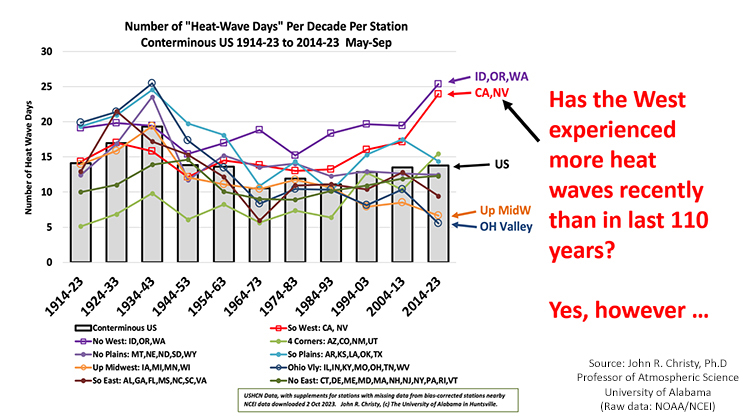
* * *
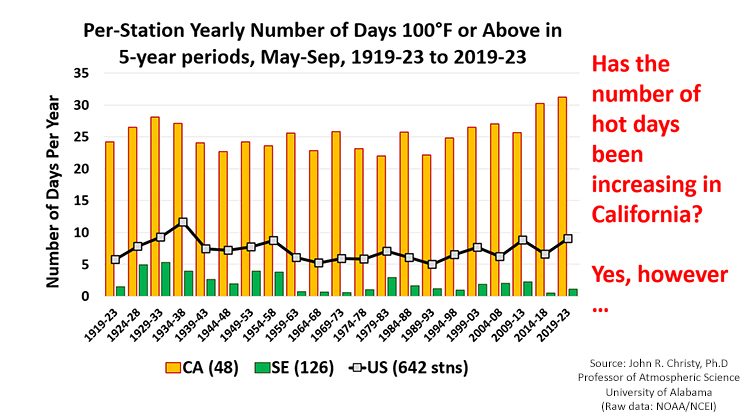
* * *
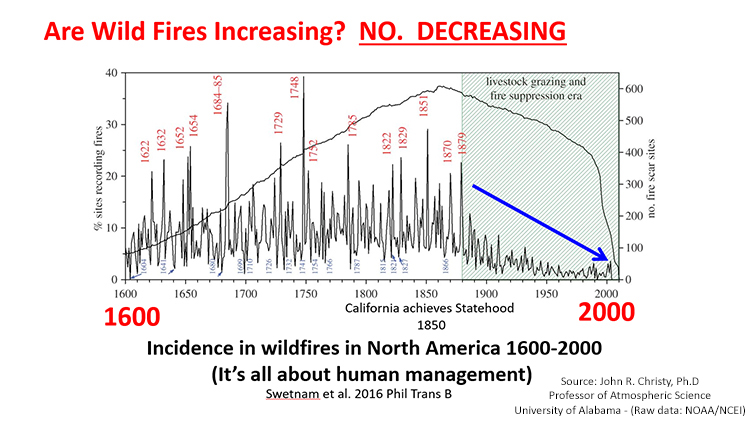
* * *
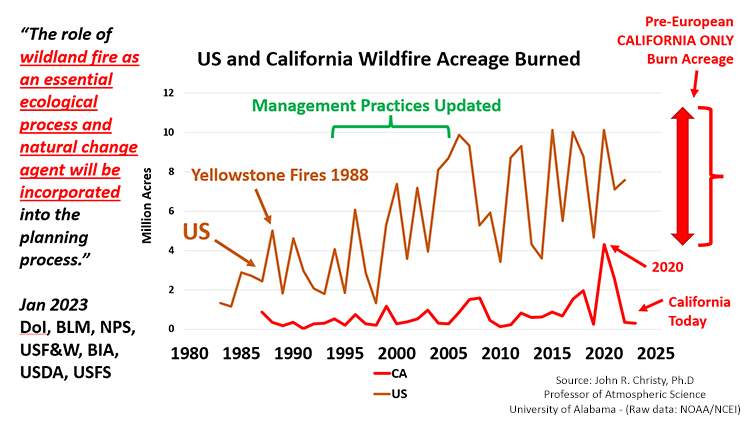
* * *
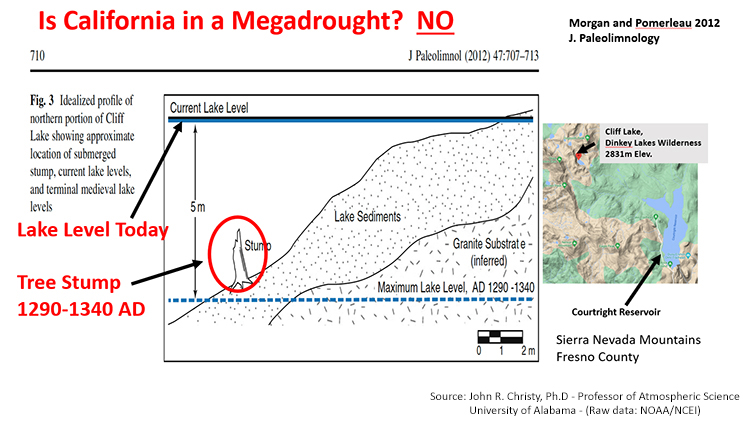
* * *
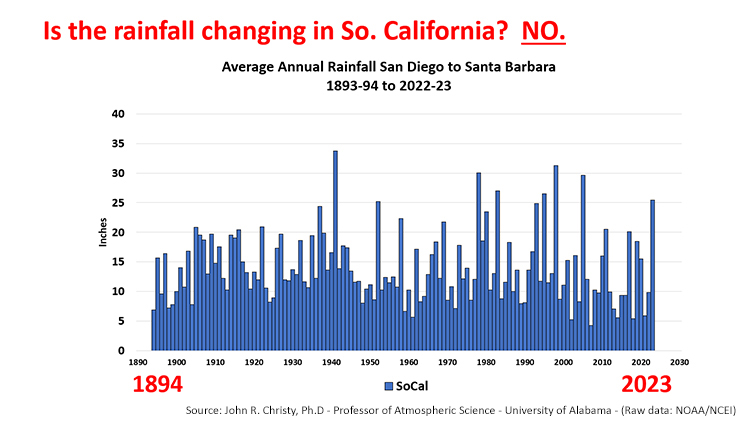
* * *
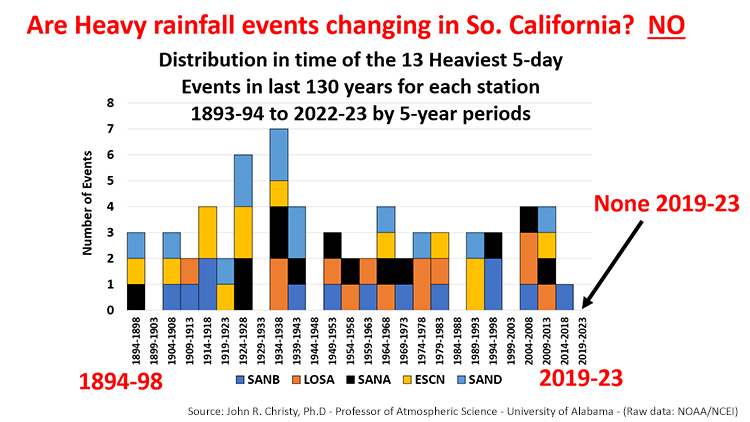
* * *
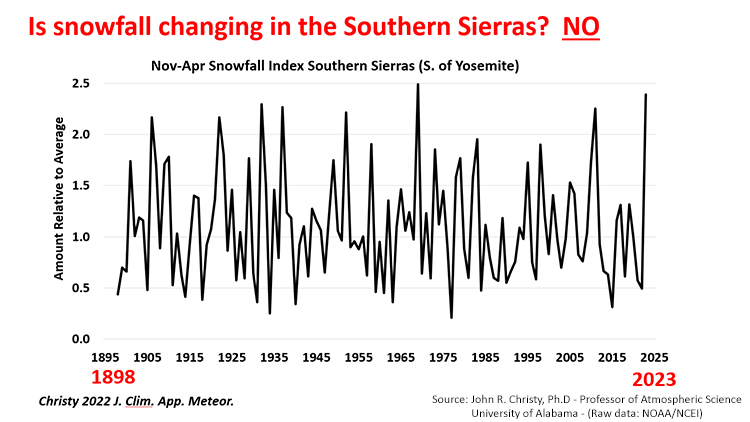
* * *
* * *
* * *
* * *
This article originally appeared in American Greatness.

